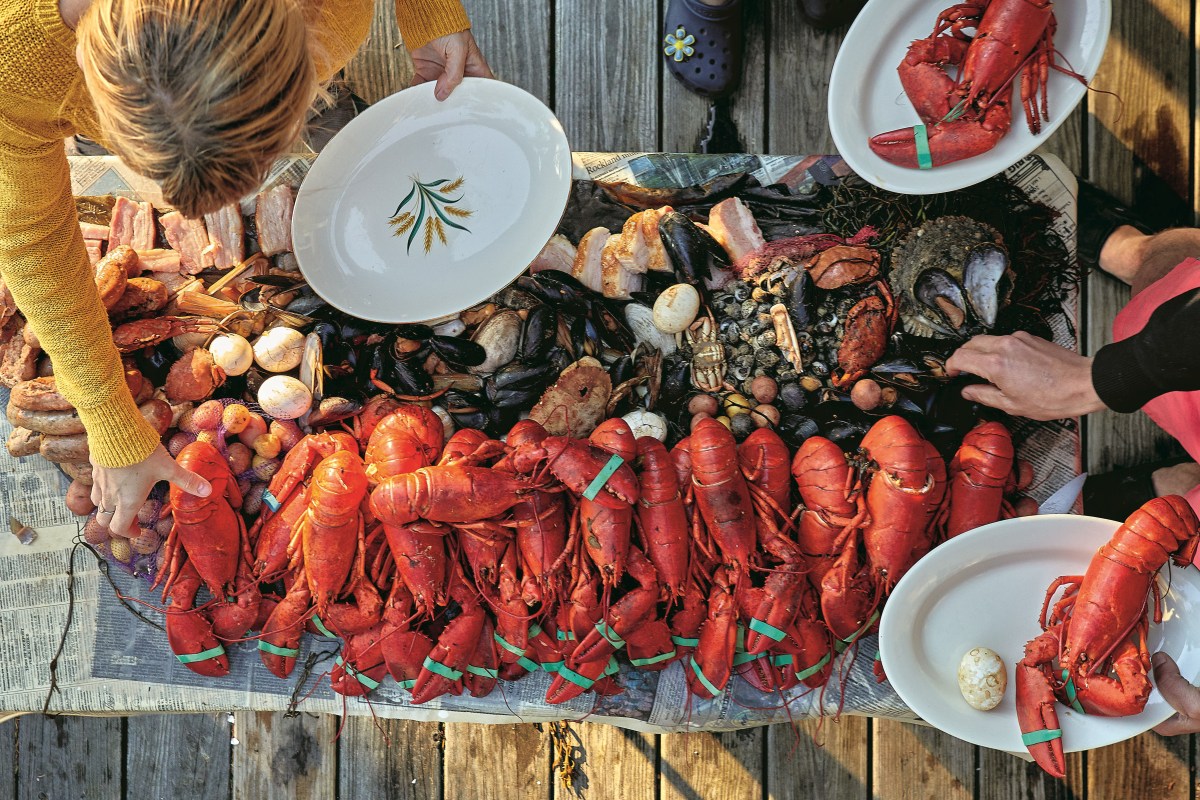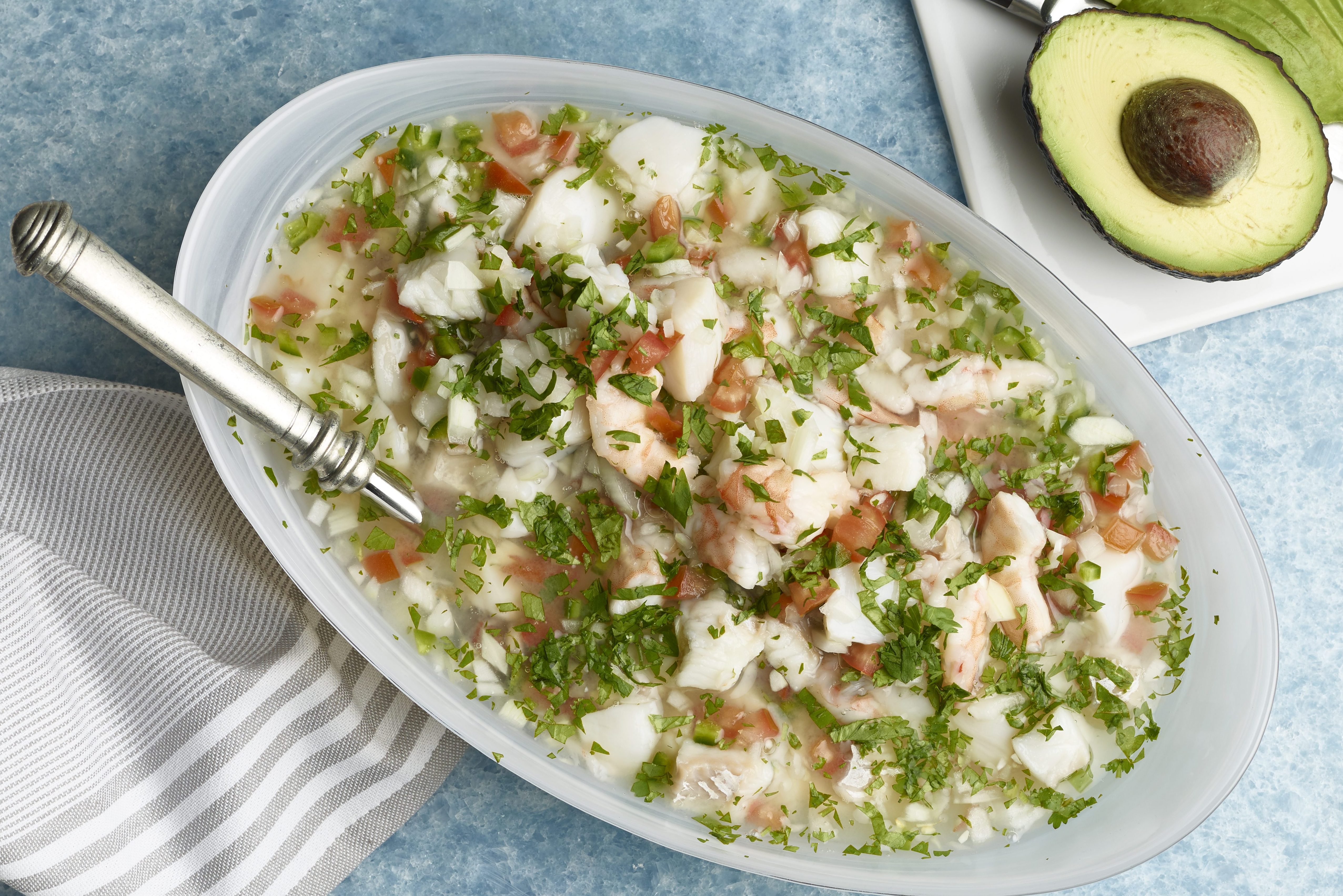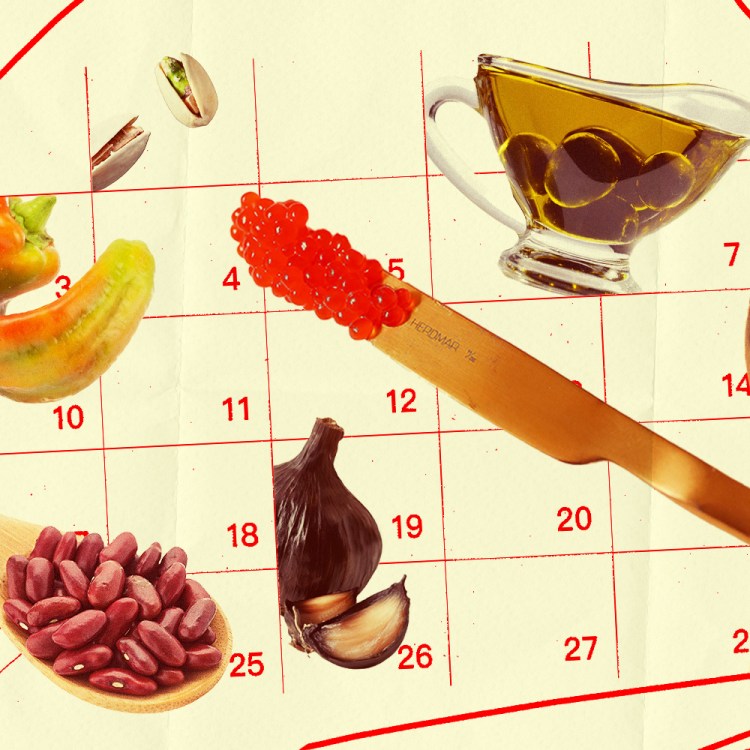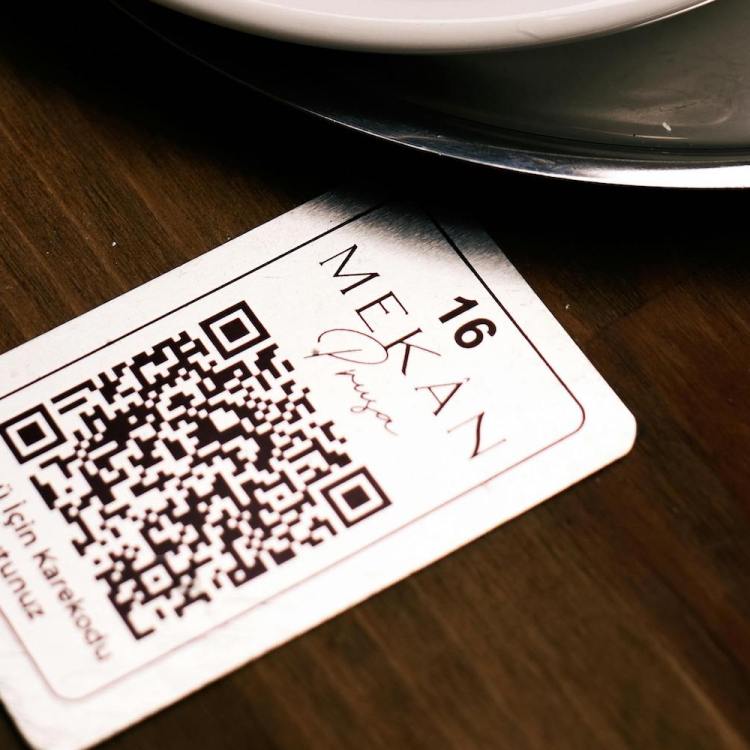James Beard Award-winning chef Mike Wiley’s Eventide is the cookbook of the summer, with paradigm-shifting takes on Yankee classics like New England clam chowder (now with kombu and nori), lobster stew (with green curry) and the iconic crab roll (with yuzu kosho mayonnaise). It also includes the worthiest of bucket lists, in the form of a compilation of the “top seafood shacks in Northern New England” — bookmark it for a safer, sunnier summer.
Last month, we talked to Wiley about the roots of that Japanese influence, what he’s cooking at home, and how his restaurant has adapted in the face of coronavirus.
Plus: Mike’s highly detailed recipe for pulling off a stellar clambake — whether you’ve got a beach or an apartment. .
InsideHook: When you’re an award-winning chef in the middle of a pandemic and it’s Fourth of July — how do you spend your holiday?
Mike Wiley: Well, when, you’re a chef and you’ve got a six-week-old son, you’re making sandwiches for your wife and basically trying to be a good guy. We actually had kind of a rainy day in Maine — I baked a loaf of bread, while my wife cooked dinner for maybe the third time in our relationship: grilled cheese with asparagus.
So even chefs are getting into the whole pandemic baking thing?
To tell you the truth, I broke my leg last fall and got into it then. Once you can move your carcass to the table, you’re pretty well set up — it’s not like a kitchen, where you’re constantly taking two steps to the left, two steps to the right. So I already had my feet under me a little — and I’m lucky, because I’ve got a team of bakers who work for me and I was able to pick their minds a little bit. I’ve been able to experiment with some strange new flours.
Tell me more about these strange new flours.
I’ve been working a lot with flours from a grain mill in Skowhegan, Maine, called Maine Grains — they source maybe 100% of the grain they mill from the state. I grew up right across the river in New Hampshire from King Arthur Flour [in Norwich, VT], and I’ve been using it throughout my career. But this has been interesting. I’m a fledgling enough baker that just expanding into 100% whole wheat or rye is exhausting enough. But they have some super interesting flours, like Danish flours.
How else has your summer been going? I know Eventide has been open for takeout and outdoor dining.
The city of Portland turned the street the restaurant’s on into a one-way, and I’m in our outdoor dining area, where we’ve been able to run service — so people are happily slurping oysters, even in a rainy Maine summer.
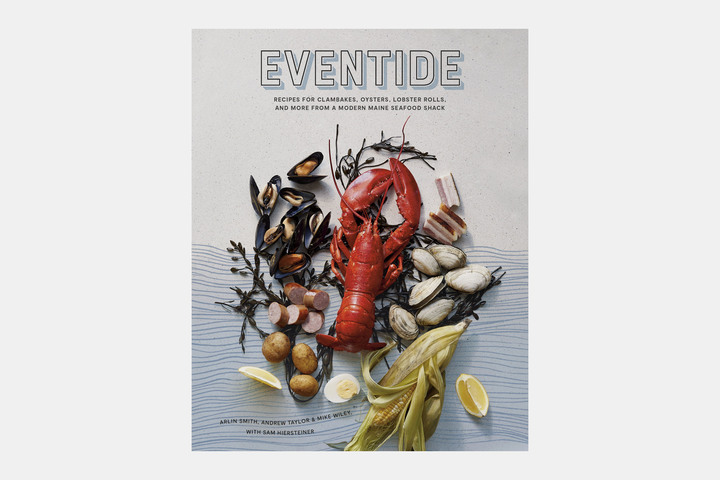
How are you feeling about restaurants right now, given where we are? Do you think there’s a future for dining out?
I certainly hope so, since I now have a kid I’d really like to be able to put through school. I’m not one to do much prognosticating, but one trend I’ve seen that’s really encouraging is, we have a commissary kitchen [supporting all Big Tree Hospitality restaurants, plus Big Tree Catering] and now our grocery delivery business, which is brand new, Big Tree Grocery. Let’s say you want to have bratwurst. We’ll make the bratwurst from scratch. We’ll bake the buns. We sell reuben kits. If you want to get into bread baking, we sell sourdough starters. We’re selling dozens of oysters along with a shucking knife, plus directions so you know how to use it without hurting yourself. It’s really cool to see people who can’t go to restaurants say, “Going out to eat used to be a really big part of my life, but now I’m going to focus on learning how to cook a little bit.”
What I love about your cooking is how it marries these New England classics with some totems of Japanese cooking. But I couldn’t figure out where that influence came from — were you trained there?
So here’s the thing — in my experience, when cooks are trained in America, they always have French techniques and Italian food just beaten into their skulls. Professional chefs will just casually use French terms all the time — but why?
The mise-en-place.
Mise-en-place. Mirepoix. It’s not like we’re walking through the kitchen just casually asking each other, “Comment ça va?” That’s what the Culinary Institute teaches — it’s just very Eurocentric. You’re coming up against French dévotés who worship at the altar of béchamel and the mother sauces. But there’s a lot more out there! If you look at Chinese food, it would take many lifetimes of research, just to start scratching the surface. Indian food as well, if you look at the history and techniques all these folks have been generating for years and years. The French have some moves — but it’s not the whole story, the only story.
I know for [business partner/chef] Andrew Taylor and myself, if someone says, “Where do you want to go to dinner tonight — this really great Greek place, this really great American place, or this really great Japanese place,” we’re picking Japanese every time. There’s just so much to learn. I’m by no means an expert. I haven’t been to Japan. But I love Japanese food, and I learn more when I eat food I love.
I can’t believe you haven’t been there — the way you approach the flavors and integrate them into your recipes just seems seamless.
You don’t make a lot of money as a cook. And if you do, it’s because you stay in the kitchen and cook a whole lot. It was only seven years ago that Andrew went to France for the first time. But both of us are really devourers of cookbooks. I’m not snooty about it — I’ll learn from anything. You learn it and say, “Done,” and put it in the quiver. And the other thing — if you draw a line latitudinally, from where we are, we’re talking about a lot of the same things. We have the same fish in the ocean here. We have interesting and robust seasonal changes. It makes sense.
How does an auto-didact chef learn best?
I’m sort of half joking when I say I’m an auto-didact. I do read voraciously and watch YouTube videos in languages I don’t understand — but where I learned cooking was not in culinary school but by getting a job in a restaurant, and then another restaurant. Everyone wants to have a certificate from a school. But if you want to play baseball, you don’t go to baseball college. You play baseball. When my leg was all screwed up, I didn’t improve my surfing by reading about surfing. With cooking, you need to spend time in the kitchen — and sweeping and mopping and cleaning out the fryer, too.
You will get better at it. Even if you don’t think you want to do it professionally, there’s value to having a great meal in a great restaurant, and then saying to the chef, “I want to come and work for free for 20 hours a week.” If they’re an excellent restaurant, they’ll probably say, “We have a line of people with degrees from culinary school who’ll do it for free” — but a great restaurant, that’s possible. I once had a great meal at a great restaurant and asked the chef if i could hang out in the kitchen and do whatever they needed — peel the potatoes. I did that for a semester, and when it got close to graduation, I said, “How about a job where you pay me for my work?” Two months later, I was a sous chef and running the restaurant. That’s the real thing to do: get in a professional kitchen. There’s nothing like a hard Saturday night service to show you what you don’t know.
So: clambake at home. What do people get wrong most often, and how can they avoid it?
Buy a steamer basket — that’s one step to improving your kitchen, and your cooking in general. And then — my wife is forever asking me to smell dairy: “Is this milk bad?” People feel like they don’t have built-in criteria to do the same thing with shellfish, but they do. If you smell bad shellfish, your entire body is going to scream out, Do not eat. Do not eat. Do not eat. If it smells fresh, you’re great. If it trips your gag reflex, don’t eat it. Our bodies have evolved over time — there’s so much built-in apparatus within them that informs us not to put spoiled meats in our mouths. If you smell spoiled chicken, you’re not going to eat it. It’s the same thing with shellfish — just trust your nose, and evolution.
Mike Wiley’s Recipe for a Most Excellent Clambake
- 1 (1- to 1¼-pound) live lobster, or 2 fresh or thawed frozen (uncooked) lobster tails
- ½ pound live mussels
- ½ pound live steamer clams
- 1 ear of corn, shucked and cut in half
- 2 hard-boiled eggs (but not too hard)
- 10 Confit Potatoes made with baby new potatoes or fingerlings
- 1 (2 by 2-inch) piece Salt Pork, sliced into ½-inch planks
- ¼ cup (½ stick) unsalted butter, melted, for serving
- ½ cup Nori Vinaigrette for serving (optional)
The clambake we serve in the restaurant includes potatoes, salt pork, steamers, mussels, lobster, smoked sausage, eggs, corn, butter and Nori Vinaigrette [that recipe is also in Eventide]. Feel free to add any type of hot sauce to dial up the flavors and textures and give people some room to explore different combinations. You don’t have to follow that approach exactly, but just look for ways to bring acidic, spicy, funky condiments and a carb wrapper of some kind to the table for that extra kick.
The vessel you choose to cook in is also important in this format. We suggest using a 12-inch bamboo steamer basket with a lid, set over a wok with a small amount of water in it to create steam. Woks are useful for this because their curved sides allow a steamer to sit inside but not touch the water in the bottom of the pan. You can use a straight-sided pot, too, but you need to make sure it is of the same diameter as the bamboo steamer so the steamer sits snuggly atop the pot. If you have a pot with a perforated steamer insert, you can just build the clambake right in the insert.
And we’ll reiterate this again, to hammer it home: aim for the perfect experience, not the perfect cookery. It’s virtually impossible to achieve evenly cooked perfection with so many different things firing at once. Our process is calibrated to deliver delicious results, but it’s inevitable that one thing or another will get a little overdone. Try to keep that one thing or another from being the lobster and don’t sweat the rest.
If you get a live lobster, place it on a clean work surface and dispatch it humanely by thrusting a sharp knife between its eyes. Pull the claws and tail off the lobster. Wash the mussels and clams. If you have it, lay the rockweed in the bottom of your steamer basket to create a bed for the shellfish. Put your lobster claws and tails atop the rockweed, in the middle, and arrange the mussels, clams, corn, egg, potatoes, and salt pork tightly around the lobster, keeping like ingredients together (mussels arrayed with mussels, clams arrayed with clams—you get the picture). Make it look nice so when you open the lid for your guest, it has that “wow” factor. Cover the basket with its top. (If you are stacking multiple baskets, you need to cover only the top basket.)
While you won’t have the time or space in this version to sit languidly around the fire as the food cooks, once you have the basket(s) loaded, there’s a nice opening for a drink with your guests. If for some reason you are worried that you may lose track of time after many pops, place the whole basket with the lid on in the refrigerator, where it will be fine for several hours.
When you’re ready, fill your wok with 3 inches of water and a big pinch of salt (it should taste like seawater). Bring it to a boil over high heat and carefully place the steamer basket in the wok, so it sits sturdily above the water. Set a timer for 12 minutes. In the meantime, get your melted butter and any other sides and condiments set out on the table.
When the timer goes off, take the lid off the steamer basket and check the ingredients. If the lobster is bright red and all the mussel and clam shells have opened up, carefully remove the basket from the heat and set it on a cutting board or a large plate or platter, bring it to the table, and dig in.
For drinks, the same stuff that works for the Grand Seaside Version works here. Get light, crisp beers like a Pilsner (e.g. Bunker Brewing Company’s Machine Czech-Style Pilz) or a wheat (e.g. Allagash White). For wine, we like fresh, young whites like a Grüner Veltliner or briny, lip-smacking Picpoul.

Confit Potatoes
- 5 pounds baby new potatoes or fingerlings, or 4 large russet potatoes
- ¼ cup kosher salt
- 4 quarts canola oil
Rinse and scrub the potatoes vigorously under cold running water in a colander. Drain the potatoes. If using baby new potatoes or fingerlings, leave them whole. If using russet potatoes, use an apple corer to punch width-wise cylinders out of the potatoes. Toss the potatoes with the salt and let sit for 1 hour.
In a pot, combine the potatoes and the oil. Bring the oil up to 200°F over medium-high heat and cook for about an hour, until the potatoes yield no resistance to a cake tester or skewer. Remove from the heat and let the potatoes and oil cool to room temperature before using. The potatoes can be packed in an airtight container and covered in their cooking oil to store in the refrigerator for up to 2 weeks. Extra oil can be used for subsequent batches of confit potatoes, vinaigrettes, frying, or any other oil needs.
Makes about five pounds.
Salt Pork
- 5½ teaspoons kosher salt
- 2 teaspoons sugar
- ½ teaspoon pink salt
- 2 teaspoons freshly ground black pepper
- ½ bunch thyme
- 5 garlic cloves, crushed
- 4 shallots, thinly sliced
- 2 yellow onions, thinly sliced
- 3 pounds skinless pork belly
In a small bowl, combine the kosher salt, sugar, pink salt, pepper, thyme, garlic, shallots, and onions and stir together. Massage the mixture with your hands to coax flavor from the aromatics. Place the pork belly on a work surface and rub it all over with the salt mixture. Seal the belly in a large vacuum-seal bag, or wrap it tightly in several layers of plastic wrap. Place in a large airtight container and store in the refrigerator for 7 days. Be sure to “overhaul” (flip) the belly every other day, to redistribute the cure. Remove the pork from its wrapping, rinse under cold water, and pat dry. At this point, your pork belly will be what Hormel or an American Revolution reenactor might call salt pork. For almost all of our recipes, we like to take it one step further and cook the salt pork.
To slow cook, set the temperature of the immersion circulator to 165°F. Seal the rinsed and dried pork in a large vacuum-seal bag and cook it in the immersion bath for 12 hours. Chill completely in an ice bath. If you don’t have an immersion circulator, put the pork in a braising pan, add well-salted water to cover, put the lid on, and braise the pork in a 200°F oven for 6 hours. Remove from the pan and let cool.
The pork can be used immediately or kept in an airtight container in the refrigerator for up to 10 days or the freezer for up to 3 months.
Makes 2 pounds.
Nori Vinaigrette
- 10 sheets nori
- ½ cup rice wine vinegar
- ½ cup canola oil
- ¼ cup light soy sauce
- 2 tablespoons mirin
Toast the nori sheets by holding them with tongs one at a time, and waving them over the flame of your gas stove, until they stiffen up, become lighter in color, and start to become aromatic, about 1 minute. (Or heat a large skillet on high heat and toast the nori on both sides for 30 seconds).
Cut the nori sheets into small pieces. In a powerful blender or spice mill, grind the nori in batches to a fine powder. In a bowl, combine the nori powder, vinegar, oil, soy sauce, and mirin and mix well. Use immediately or store in an airtight container in the refrigerator for 2 to 3 days.
Makes about 1½ cups.
Every Thursday, our resident experts see to it that you’re up to date on the latest from the world of drinks. Trend reports, bottle reviews, cocktail recipes and more. Sign up for THE SPILL now.
